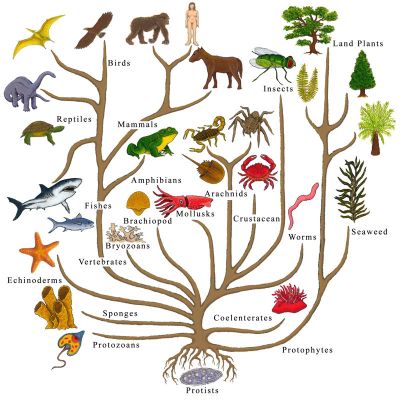 |
| Image Source: https://goo.gl/6iKSjS |
Summary:
All organisms that are alive and currently extinct all have a common ancestor. Although we don't know who or what the specific species is, there is sufficient evidence to make that claim. The first form of evidence is comparing fossils and bones together to see which ones are similar. Humans, bats, cats, lizards, whales and birds have a humerus, radius, ulna, carpals, metacarpals and phalanges. Although these parts vary depending on the species, this proves that species once had a common ancestor that eventually diversified through the process of evolution. Another form of evidence is by comparing the traits between species. Using a cladogram, we can tell where a species split into two sections. Looking at a caiman, bird and T-Rex from a cladogram, it shows that they all have common traits such as having vertebrae, a bony skeleton and four limbs which proves that they have a common ancestor.
SP4 - Analyzing and Interpreting Data:
This week I analyzed and Interpreted data when trying to investigate how all organisms have a common ancestor. The first piece of evidence that I analyzed were homologous structures. Many species (mammals in particular) have the same forearm skeletal structure, having a humerus, radius, ulna, carpals, metacarpals and phalanges. This proves that there ha been a common ancestor and has diversified and evolved into these organisms. The second piece of evidence is embryology images of animals in their embryo state. From the images alone, we can see that many of the organism's in their embryonic state are similar, which shows once again that organisms once had a common ancestor.
No comments:
Post a Comment